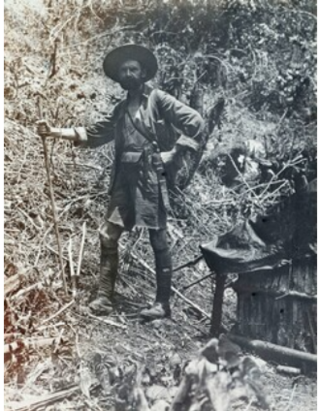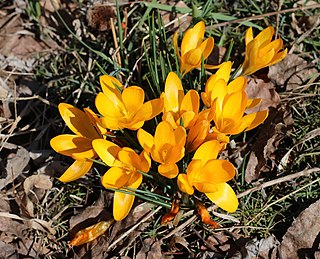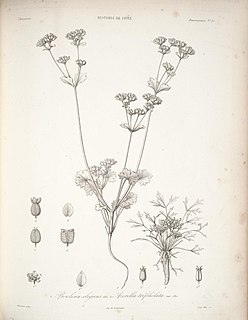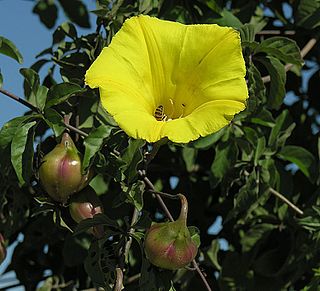
Richard Spruce was an English botanist specializing in bryology. One of the great Victorian botanical explorers, Spruce spent 15 years exploring the Amazon from the Andes to its mouth, and was one of the first Europeans to visit many of the places where he collected specimens. Spruce discovered and named a number of new plant species, and corresponded with some of the leading botanists of the nineteenth century.

Pyotr Kuzmich Kozlov was a Russian and Soviet traveler and explorer who continued the studies of Nikolai Przhevalsky in Mongolia and Tibet.
George Henry Hamilton Tate was a British-born American zoologist and botanist, who worked as a mammalogist for the American Museum of Natural History in New York City. In his lifetime he wrote several books on subjects such as the South American mouse opossums and the mammals of the Pacific and East Asia.

Cecil Boden Kloss was an English zoologist. He was an expert on the mammals and birds of Southeast Asia. The Rubiaceae genus Klossia was named after him.

Centropogon is a plant genus in the family Campanulaceae. In systems where the Lobeliaceae are recognized as distinct, Centropogon is placed there.

Centropogon dissectus is a species of plant in the family Campanulaceae. It is endemic to Ecuador. Its natural habitat is subtropical or tropical moist montane forests. It is threatened by habitat loss.

Eve Torres Gracie is an American actress, dancer, model, martial arts instructor, and former professional wrestler. She is best known for her time with WWE, where she was the first ever three-time WWE Divas Champion.
Cryptopus, abbreviated Crypt. in the horticultural trade, is an orchid genus with 4 species native to Madagascar, Mauritius and La Réunion.

Jean Jules Linden was a Belgian botanist, explorer, horticulturist and businessman. He specialised in orchids, which he wrote a number of books about.

Hans Schinz was a Swiss explorer and botanist who was a native of Zürich.

Crocus flavus, known as yellow crocus, Dutch yellow crocus or snow crocus, is a species of flowering plant in the genus Crocus of the family Iridaceae. It grows wild on the slopes of Greece, former Yugoslavia, Bulgaria, Romania and northwestern Turkey, with fragrant bright orange-yellow flowers. It is a small crocus (5–6 cm, despite the names of some cultivars, compared to the giant Dutch crocuses. Its cultivars are used as ornamental plants.

Thelypteris palustris, the marsh fern, or eastern marsh fern, is a species of fern native to eastern North America and across Eurasia. It prefers to grow in marshy situations in full sun. The species epithet palustris is Latin for "of the marsh" and indicates its common habitat. It is the only known host plant for Fagitana littera, the marsh fern moth.
The Plant List was a list of botanical names of species of plants created by the Royal Botanic Gardens, Kew and the Missouri Botanical Garden and launched in 2010. It was intended to be a comprehensive record of all known names of plant species over time, and was produced in response to Target 1 of the 2002-2010 Global Strategy for Plant Conservation, to produce "An online flora of all known plants.” It has not been updated since 2013, and has been superseded by World Flora Online.
The World Checklist of Selected Plant Families is an "international collaborative programme that provides the latest peer reviewed and published opinions on the accepted scientific names and synonyms of selected plant families." Maintained by the Royal Botanic Gardens, Kew, it is available online, allowing searches for the names of families, genera and species, as well as the ability to create checklists.
Carl Adolf Georg Lauterbach was a German explorer and botanist.
Plants of the World Online (POWO) is an online database published by the Royal Botanic Gardens, Kew. It was launched in March 2017 with the ultimate aim being "to enable users to access information on all the world's known seed-bearing plants by 2020". The initial focus was on tropical African Floras, particularly Flora Zambesiaca, Flora of West Tropical Africa and Flora of Tropical East Africa.

World Flora Online is an Internet-based compendium of the world's plant species.

Homalocarpus is a genus of flowering plants in the family Apiaceae, found in Chile. They are annual herbs with white, yellow, red or purple flowers.
Distimake is a genus of flowering plants belonging to the family Convolvulaceae.

Distimake aureus is a species of vining plant in the bindweed family (Convolvulaceae) commonly known as the yellow morning-glory, yellow woodrose or yuca vine. A woody vine, this species is characterized by its large trumpet-shaped yellow flowers that bloom year-round, though most often after rain. Each of the showy flowers are only open for a single day. It is endemic to Baja California Sur, Mexico, where it can be found twining and climbing over trees, shrubs, and rocks.














